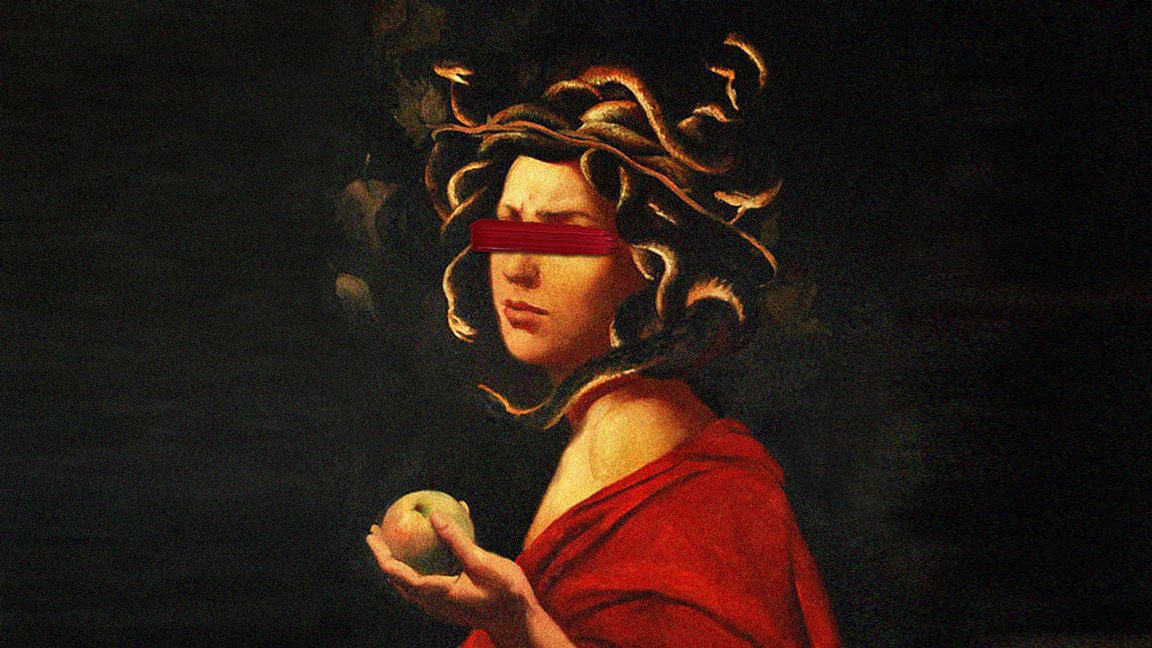(Trigger warning: This article contains the words rape and sexual harassment.)
The Tale of Medusa tells us of The Gorgon with a head full of snakes, whom no man could ever gaze at without turning her into stone. In fact, killing her became one of mythology’s greatest quests when demigod Perseus beheaded her, using it as a weapon and giving it as a gift to the goddess of wisdom and war, Athena. A woman so feared, even a lock of her hair was used to cast terror unto any enemy unfortunate enough to even accidentally behold it.
But was Medusa really the terrifying villain Greek mythology has painted her to be? Or was she a victim, often overlooked by the patriarchy—including the gods of Olympus?

Behind the heroic, machismo culture that these tales have bred, Medusa remains an image of female rage. If you haven’t brushed up on mythology 101, it was said that she was one of the most beautiful women that ever walked the earth—so breathtaking that she could rival Athena’s charms. This stirred jealousy within the goddess. One day, the sea god Poseidon saw Medusa and could not resist her beauty, forcing himself onto her in the temple of Athena. The goddess ignored the Gorgon’s plea for help and punished her by turning her hair into snakes and made it impossible for anyone to even look at her. This curse consumed Medusa and fueled her hatred for mortals.
RELATED: FYI, Fat-Shaming Doesn’t Work
Medusa is just one of the prominent figures of feminism whose backstory is often left in the dark. For her, it was Athena’s temple. For me, it was in my own home—at 5 years old.
The trauma never left me and took me years to even accept it, but here I am, fearlessly writing about it because of all the other women who came forward when #HijaAko trended on Twitter a few months ago. If you haven’t been on social media, it trended when a male public figure called out a rising female Gen Z icon and activist when she tweeted, “stop teaching girls how to dress? Teach people not to rape.”
According to BBC, a meta-analysis of 28 studies of women and girls aged 14 and older who had non-consensual sex obtained through force or threat found that 60% of these victims didn’t acknowledge that they had been raped.
A key reason why most cases aren’t reported right away? Because it’s common for victims to need time to acknowledge what’s happened to them, with some reporting it a few years later—making it easy for authorities to dismiss it.
Rape culture is real. When a female talks about her experience, it is often met with responses such as “maybe you were wearing a skimpy outfit,” “you asked for it!” or “boys will be boys!” At an early age, girls are taught to dress modestly so that boys will not be tempted. The acceptance of this “prevention” for so many years became a justification for many assaults, but no one thought about the “solution.” If it’s the clothes that provoke men, then why are children (some even infants) victimized? If they froze in fear instead of fighting back, how come they “asked for it?” Why do we teach girls to behave instead of correcting boys as a solution? Why is it so hard to teach males to not look at females (or males) as sexual objects designed to serve them?

How could Athena, a divine being full of power, be so merciless? How could a victim be blamed for every unfortunate event? Why do women always have to be in the losing end?
If this happened to you, you are not damaged goods. You are a survivor whose power is waiting to be recognized. You are the woman of your quest. Be patient with yourself, take your time in healing. If you haven’t experienced it, help someone you know by listening, reassuring, encouraging and helping them establish a safe space physically and emotionally. Read their stories, share their pain and may all of us be less fearful, more brave, and erase the stigma completely.
Painting in featured art by Valentin Melik





